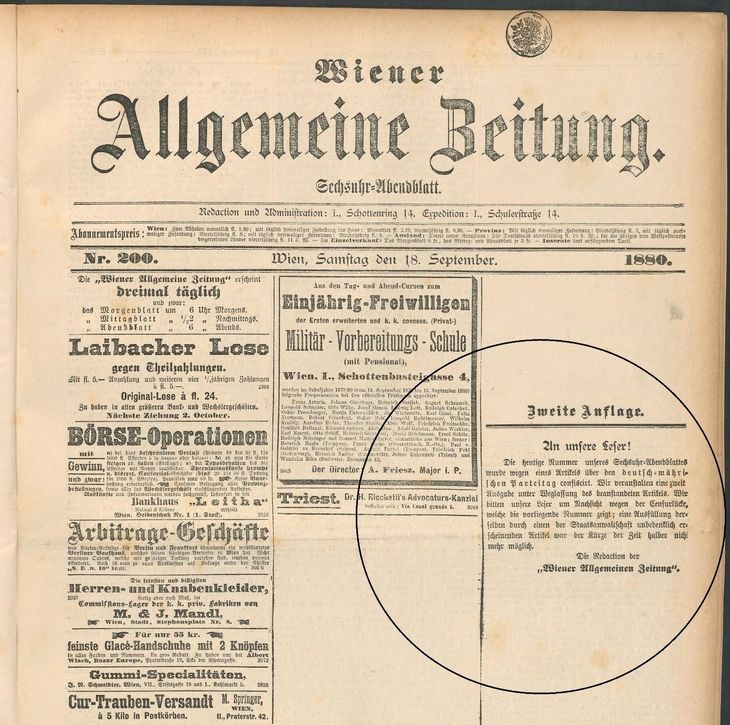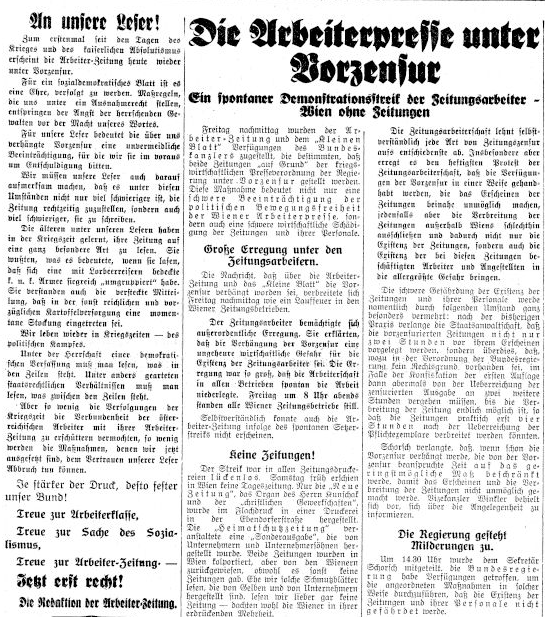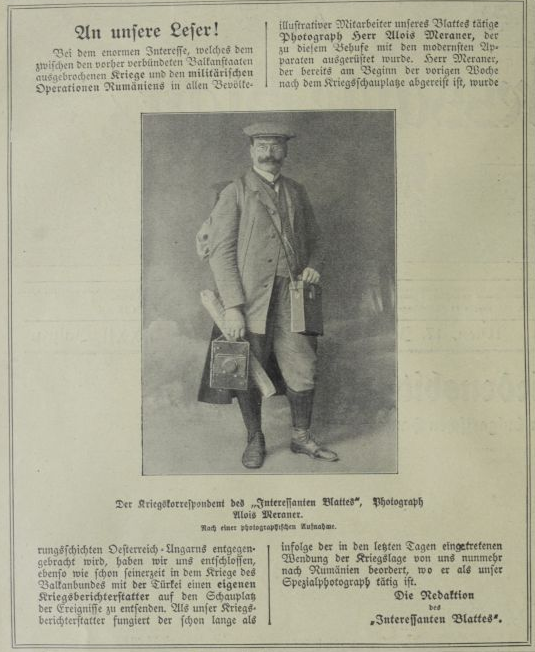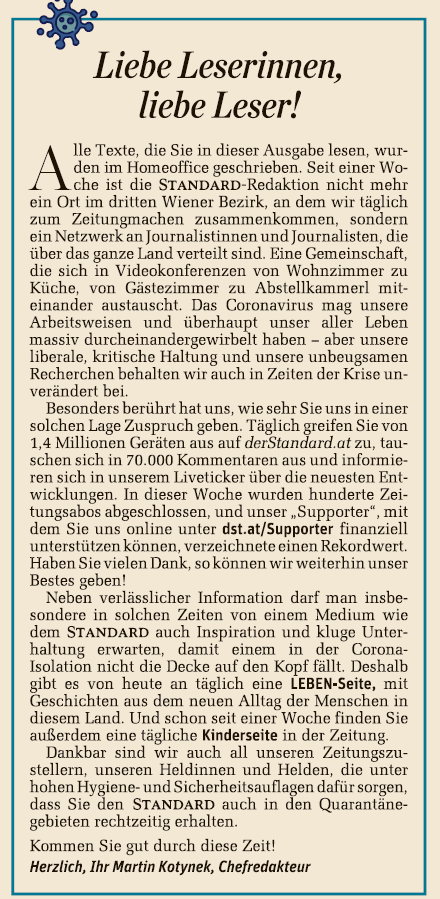Les articles du blog NewsEye sont rédigés par les membres de notre équipe projet. Parmi les thèmes traités figurent les conférences auxquelles nous assistons, des réflexions sur les questions d’actualité pertinentes, des actualités et les avancés de notre projet, ainsi que du contenu plus succinct diffusé dans le cadre de nos études de cas sur les humanités numériques ou de nos publications relatives au projet. Les articles du blog sont publiés principalement en anglais, mais néanmoins proposés de temps à autre dans la langue de prédilection du membre de l’équipe projet concerné, puisque notre petite troupe parle plusieurs langues ! Bonne lecture !
Of „difficult“ and „modern“ times. The development of journalism in historical newspapers
The interaction between the newsroom and the readership enables to gain various insights into the development of journalism. Particularly in historical newspapers and digital archives, dealing with the communication between the productive and the receptive dimension is a useful approach to assess the journalistic meta-level and changes in the media landscape. Therefore this blog post discusses the question of how changes inside the media production, i.e. especially the editorial office, were communicated to the outside world, i.e. the readers. Of specific relevance are those articles that contained information on the interior of the journalistic practice due to reports on technical innovations, societal shifts or politically extraordinary times.
“Difficult times”: confiscations, wars and censorship
In the context of the phrase “an unsere Leser” (“to our readers” there were many references to challenges and difficulties that the newsroom or the paper had to cope with. Directly addressing the readership served the reinforcement of the common cause and additionally the moralistic call for support. Moreover, the respective status and development of the freedom of the press came to the surface. After revolutions in 1848, more liberal press laws and partly even the freedom of the press were established, as for example in Germany in 1874 or in France in 1881 (Telesko 2010, p. 232). In Austria-Hungary, article 13 of the “Staatsgrundgesetz über die allgemeinen Rechte der Staatsbürger" from 1867 acknowledged the freedom of the press (Melischek/Seethaler 2016, p. 170). On a formal basis, steps towards more freedom of information and expression were taken. In practice, though, one may hardly speak of a real freedom of the press, because there were frequently cases of confiscation and censorship. A paper often stated this, as the example of the Wiener Allgemeine Zeitung from 18 September 1880 illustrates (figure 1).

“An unsere Leser!
Die heutige Nummer unseres Sechsuhr-Abendblattes wurde wegen eines Artikels über den deutsch-mährischen Parteitag confiscirt. Wir veranstalten eine zweit Ausgabe unter Weglassung des beanstandeten Artikels. Wir bitten unsere Leser um Nachsicht wegen der Zensurlücke, welche die vorliegende Nummer zeigt; eine Ausfüllung derselben durch einen der Staatsanwaltschaft unbedenklich erscheinenden Artikel war der Kürze der Zeit halber nicht mehr möglich.
Die Redaktion der ‘Wiener Allgemeinen Zeitung’.”
Translation:
„To our readers!The today’s issue of our evening paper was confiscated due to an article on the German-Moravian party congress. We publish a second issue by leaving out the critical article. We ask our readers for understanding the censorship gap, which is in the current issue; a replacement with an article that is unproblematic for the district attorney was no more possible because of the shortage of time.
The editorial office of the ‘Wiener Allgemeine Zeitung’.”
This example clearly shows that despite liberal press laws the authorities still confiscated newspapers. It often occurred that newspapers had to publish a second issue without the problematic articles on short notice. They could not always compensate the lack so that it came to gaps as depicted in figure 1. The message “An unsere Leser” emphasises why it was important to the editorial office to explain these irregularities. It was in their interest to ask the readers for understanding and to excuse the disturbance. The phrase search in ANNO thus underlines the differences between the formal legal basis and the actual journalistic practices. As such it makes forms of censorship visible.
At times of war the restrictions on the press were even intensified. In World War One pre-censorship was installed: As can exemplarily be seen in the Salzburger Wacht from 29 July 1914, the paper had to be shown to the district attorney three hours before the actual publication and distribution. The editorial office warned the readers of this burden and mentioned the irregularities in the publication process, simultaneously begging for understanding. The readership was asked “to remain loyal to the paper throughout the difficult times of war” (“auch über die schwere Kriegszeit treu zu bleiben”) and to adhere to the paper. Similar messages during war times can be found in various other newspapers, such as in the (Linzer) Tages-Post, the Arbeiter-Zeitung or the Innsbrucker Nachrichten. The latter was forced to reduce the publication rhythm due to difficulties in the production, as the “editors-in-chief and the administration” (“Schriftleitung u. Verwaltung”) announced on 5 February 1916, p. 5.
After 1920 the daily press became the leading medium of the First Austrian Republic. In comparison with the year 1910 the total number of published newspaper witnessed a rise of 18 per cent and the total number of issues increased by 30 per cent from 1.2 million to 1.58 million issues per day (Melischek/Seethaler 2019, p. 9–11). Another milestone for the development of journalism and an example for “difficult times” of the freedom of the press in Austria can be located at the end of the First Republic. After the elimination of parliament on 4 March 1933 and the formation of an Austro-fascist dictatorship (“Kanzler-Diktatur”) by Engelbert Dollfuß, severe restrictions for newspapers were installed, especially for those with a social democratic stance. As the “Zentralorgan der Sozialdemokratie Deutschösterreichs”, i.e. the full sub-title of the Arbeiter-Zeitung, this paper was particularly concerned. Based on the phrase “an unsere Leser” (“to our readers”), the interaction with the audience reveals many interesting results on the changes in the journalistic sphere. The editorial office and the administration of the paper directly addressed the readership on 21 March 1933 and spoke of the great hardships “for the social democratic press, but also its readers and friends” (“an die sozialdemokratische Presse, aber auch an unsere Leser und Freunde”). Due to the strict and frequent confiscations the district attorney had interfered the relation between the paper and the readers. In this sense the control measures had strongly constrained the bond between the newsroom and the audience and the authorities stood between them. On 26 March 1933 the editors explicitly spoke of “pre-censorship” and told the readership that it now had to decipher hidden messages and read “between the lines” (figure 2). Ultimately it called for support in these challenging times, using the slogan “Jetzt erst recht” (“Now more than ever”). It appealed to stand side by side with the working class, socialism and the Arbeiter-Zeitung itself. About year later, on 12 February 1934, the Social Democratic Party was forbidden so that the paper could only be published illegally and in exile in Brünn (Melischek/Seethaler 2019, p. 25).

“Modern apparatuses”: technical and editorial changes
Along with the depiction of the self-image of newspapers as well as legal and political developments in the context of censorship and freedom of the press, changes in the production process may also be discussed. In the exchange with the readership the communication of technical or editorial changes played a key role. In this regard, messages with the phrase „an unsere Leser“ (“to our readers”) served the purpose of self-representation, the creation of transparency or the formation of a bond to the audience. They are especially useful for gaining insights into both the technological progress and the journalistic practices of the day.
The keywords “post” and “publish” appear very often in relation to the technical infrastructure of a newspaper or the publication process itself. Particularly frequent are notes on irregularities, accidents, problems or mistakes in the production process or in the distribution and transport. In addition, the process of production, which is largely hidden in the background, becomes accessible. For instance, the Morgen-Post (20 December) and Die Presse (23 December) wrote in 1862 that in future they would use a new and innovative printing press and, thus, offer an improved and high-standard production. Moreover, the often widely neglected staff, the printers themselves, are featured in articles, highlighting their significance for the division of labour in the age of industrialisation. For example, the Morgen-Post and the Neue Freie Presse in February and March 1870, the Arbeiter-Zeitung in May 1891 and various other papers in December 1913 reported about workers’ strikes and boycotts. Temporary delays in the publication of the newspapers partly were the consequence. The introduction of the 6-day-labour-week and the ban of industrial labour in June 1885 had similar effects. Subsequently the publication rhythm of newspapers were affected insofar as the Monday’s issue could only be published at a later point.
Editorial changes can be found in the phrase “an unsere Leser” just like technical innovations and shifts. However, these cannot be regarded separately, but always intertwine and relate to one another. Therefore along with the progress in the printing press other technical innovations such as the emergence of photography had profound impacts on the editorial work. Das Interessante Blatt gave an insight into the journalistic practices in 1913. As an illustrated weekly paper it focused on graphic visualisations and photographs early on. In the context of the Balkan wars, the editorial office told the readers on 17 July 1913 that due to the great interest in the events it had sent a war correspondent to the region (figure 3). Accordingly, this would be the experienced photographer Alois Meraner, who was equipped with the “most modern apparatuses” (“modernste Apparate”) and could now provide images and reports from the warzone. The paper represents him with his labour equipment as a professional and modern special correspondent. The message to the readers offers a glimpse of the backstage of early war and photojournalism and simultaneously shows the self-representation of the paper. It undoubtedly wants to present itself as a progressive, up-to-date newspaper and to emphasise that this is reflected in the news coverage.

All in all the changes on the level of content are often communicated with the phrase “to our readers” (“an unsere Leser”). Further instances are the introduction of a new section, as was the case in the Illustrierte Kronen Zeitung on 28 November 1921. Here the editors announce that the subject “Volkssport” (“people’s sports”) will be promoted to be a daily rubric. This shows that external conditions and societal changes such as the emergence of movements of sports and physical exercise also affected the agenda setting of newspapers. What is more, the changing of locations and new addresses as contact details of the newsroom are frequently to be found in the results. This highlights the aspect that the editorial office as the epicentre of journalistic output and the hub of interaction with the readers always had to be reachable. For that reason internal changes had to be announced to the outside world.
By looking at the present, it is worth underlining that these practices of interaction are still in use. Their significance as messages for fostering the reader-journal-bond has not decreased. For instance, the editor-in-chief of the Austrian daily Der Standard directly addressed the readership in the early phase of the Corona pandemic (figure 4). In the issue from 21 and 22 March 2020 he told the readers how the “crisis” (“Krise”) and the “lockdown” affected the production of the newspaper. Although the phrase “to our readers” was not used explicitly, the message contains essential aspects similar to the ones that were already outlined: editorial changes such as new sections (children’s page), the change of location of the newsroom (to the decentralised home office), the self-image and the paper’s ideology as well as indicators on financial support. The example shows up the continuities in the development of journalism and the relevance of the interaction between editorial office and readership. Not least did this note to the audience occur during extraordinary times, in which the production of newspapers was fundamentally challenged and had to be adapted. As such the Covid-19-pandemic also represents another milestone in media history itself.

Conclusion
To sum up, the interaction between the newsroom and the readership based on the phrase “an unsere Leser” (“to our readers”) sheds light on essential journalistic strategies and practices. The reasons for the direct communication with the audience are manifold: It was about the call for support and loyalty in difficult times, during wars or stricter measures of censorship as well as the announcement of technical or editorial changes. According to this phrase, numerous insights into the internal life of the newsroom and newspaper production can be gained. Thereby the diverse political, legal, social and technological components of journalism come to the surface. In this sense, a better awareness for newspapers as complex societal fields can be raised: It comprises the dependence on the industrial division of labour and the efficiency of technical infrastructure as well as their consequences on social practices on the level of content. Digital newspaper archives thus provide ideal methodological approaches for learning about the development of media and journalism in the 19th and early 20th century.
Newspaper resources
Arbeiter-Zeitung, 21. März 1933, S. 4.
Arbeiter-Zeitung, 26. März 1933, S. 1.
Das Interessante Blatt, 17. Juli 1913, S. 2.
Illustrierte Kronen Zeitung, 28. November 1921, S. 3.
Innsbrucker Nachrichten, 5. Februar 1916, S. 5.
Salzburger Wacht, 29. Juli 1914, S. 2.
Wiener Allgemeine Zeitung, 18. September 1880, S. 1, Abendblatt
References
Melischek, Gabriele/Seethaler, Josef (2016): Die Tagespresse der franzisko-josephinischen Ära,Matthias Karmasin/Christian Oggolder (eds.), Österreichische Mediengeschichte. Band 1: Von den frühen Drucken zur Ausdifferenzierung des Mediensystems (1500 bis 1918), Wiesbaden, p. 167–192.
Melischek, Gabriele/Seethaler, Josef (2019): Die österreichische Tagespresse der Ersten Republik, Matthias Karmasin/Christian Oggolder (eds.), Österreichische Mediengeschichte. Band 2: Von Massenmedien zu sozialen Medien (1918 bis heute), Wiesbaden, p. 7–36.